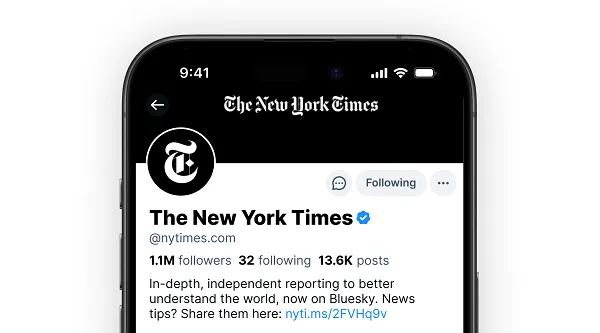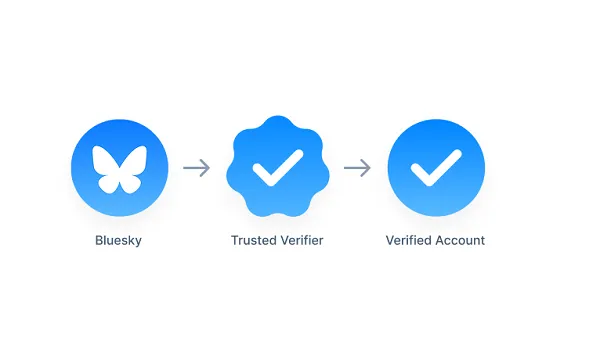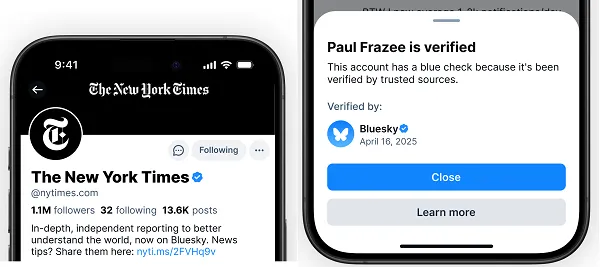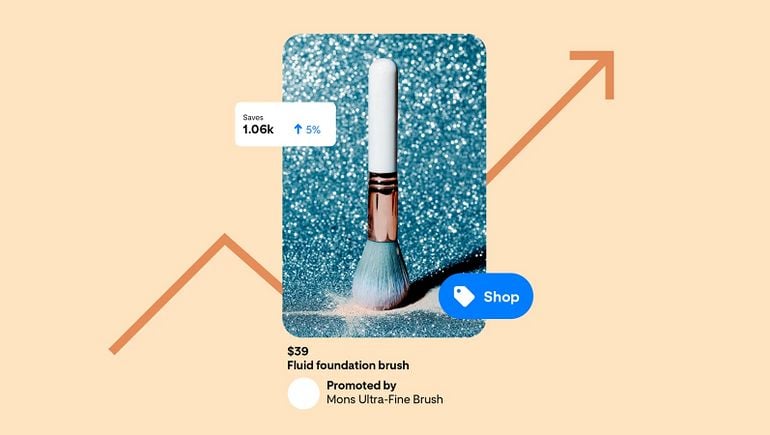Bluesky has taken another step in replicating the Twitter of days past, by adding blue verification checkmarks to approved users.

As you can see in this example, from the profile of Bluesky CEO Jay Graber, Bluesky’s taking a slightly different approach with its checkmarks, with a round marker displayed on verified user profiles, which replicates the rounded display of the Bluesky logo in the app.
Though it will show a more traditional checkmark on the profiles of some other accounts:

So what’s the difference?
Well, in order to scale its verification process, and reduce the onus on Bluesky’s team to verify every approved profile, Bluesky’s actually handing that responsibility to trusted providers as well, meaning that selected, approved entities will be able to award their own blue ticks in the app.

As explained by Bluesky:
“We’re also enabling trusted verifiers: organizations that can directly issue blue checks. For example, the New York Times can now issue blue checks to its journalists directly in the app. Bluesky’s moderation team reviews each verification to ensure authenticity.”
Users will be able to tap on an account’s verification tick to see how they’ve gained verification, with a brief explainer on the approval process.

Will that work?
God no, I can’t imagine that this is going to scale very well, and that every approved organization is going to act responsibility in doling out blue ticks. But the Bluesky team will be rolling this out slowly, which may help it identify the error in this approach before it becomes a bigger problem for the app.
Essentially, what will happen is that there’ll be misinterpretation among approved organizations as to what qualifies as meeting Bluesky’s blue tick requirements. Really, this should only be for public-facing staff, but someone at some company is going to want to approve everybody, from the front desk staff to the security team, which will then lead to random checkmarks appearing in the app.
And once one company is approving everyone, others will follow suit. And then there’s the issue of staff leaving and who’s responsible for keeping these listings up to date, etc.
It’s an interesting idea, but a completely unworkable one at scale, and the only way that Bluesky will be able to operate this effectively is if Bluesky’s growth doesn’t blow up in any significant way.
Which maybe it won’t.
Bluesky saw a big surge mid last year, adding 20 million users over a four-month span, which has taken it to 35 million users today. But it’s only added 5 million more users over the first four months of this year. Threads is seemingly where most Twitter cast-offs are now gathering, and while Bluesky did look to be a viable alternative for a time, it’s now seeming less like a home for most communities.
Though again, at smaller scale, the Bluesky team will be better able to check and confirm each of these verification approvals, while it’s also keeping this rollout small for now.
“During this initial phase, Bluesky is not accepting direct applications for verification. As this feature stabilizes, we’ll launch a request form for notable and authentic accounts interested in becoming verified or becoming trusted verifiers.”
So that may work, but only within a very confined and monitored approach. Outside of that, this will be another failed attempt to implement verification in a social app.














